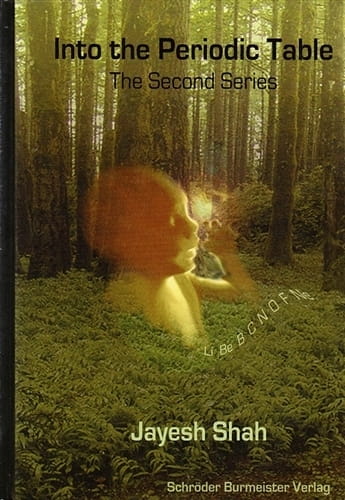- Home
- Author
- Anne Vervarcke
- Into the Periodic Table
Into the Periodic Table
by Jayesh Shah
This book contains cases and analyses from material presented at a seminar in Munster, Germany, along with his recent ideas and experiences with the periodic table. The seminar was the culmination of an on-going series that lasted ten years. Foreword by Dr Rajan Sankaran.
- Author: Jayesh Shah
- ISBN: 9783980962605
- 262 pages
- Hardback
- Printed in Germany
Reprinted with the permission of The Society of Homeopaths (from "The Homeopath" magazine, Summer 2006 edition). Reviewed by Jo Evans.
Based on a series of seminars held in Munster, Germany, this book presents the clinical experience and insight of Dr Jayesh Shah as he explores the remedies in the second series of the periodic table: the Carbon series. The main theme of mineral remedies is structure and that of Carbon is identity. This book has a surprisingly pleasing and effective structure, facilitating our understanding of the true identity of remedies in the Carbon series.
Fifteen cases are presented, as well as additional chapters to complement and consolidate the cases: clarifying the remedies in this series in relation to each other, looking at the essence of Carbon, and exploring the unifying theme of minerals and structure, for example. The cases include Hydrogen, Lithium carb, Lithium mur, Lithium phos, Lithium, Beryllium, Baryta mur, Boron, Carbolic acid, Carboneum hydrogenisatum, Oxygen and Nitrogen. Perhaps this list sounds daunting to some, but fear not.
The book is a transcript of seminars; therefore, in addition to the presentation and explanation of each case, we get to read the students' questions and the replies, as well as the PowerPoint notes presented, deepening our understanding of each case and remedy and clarifying the whole. As the cases are presented, we read not only the video transcript of what is happening in the consulting room, but also the explanatory comments made by Jayesh Shah as he presents each section of the video to the seminar attendees. The students' questions play an important role in the book. You might think this translation of mediums (audio-visual and oratory into words on a page) wouldn't work, but in fact it works very well indeed. This is thanks to the work of Almasto Ralf Burmeister who has very carefully reconstructed the seminars into the pages of this book.
Rarely have I read such clear and illustrative cases as those of Dr Jayesh Shah. I have never heard him lecture before, except by means of reading this book. Reading it certainly made me feel that his is a voice well worth listening to.
Reprinted with the permission of Homeopathic Links, Volume 19, Summer 2006:
Reviewed by Dr J. Rozencwajg, New Zealand:
This book-is the printout of a seminar held by Dr. Jayesh Shah in Munster, Germany.
He presents fifteen cases, all treated with remedies from the second series of the periodic table. And as is the case in this type of teaching, the cases have been selected according to the remedy used and not according to their interest, difficulty or therapeutic approach.
The cases are clearly presented as copies of the interview, interspersed with comments and explanations. Once done with the interview, Dr. Shah goes immediately to the interpretation of the situation, the perception of the "state in which the patient is" and from there to the remedy. There is an abundance of remarks like "by then I knew the remedy very well". This is very nice when you focus on only one type of remedy or if you have an encyclopaedic knowledge of the Materia Medica; unfortunately that is not my case.
There is almost no repertorisation in the way we, the proletarian homeopaths, would do. I wonder what the choices would have been if a regular use of rubrics had been made? Would any of those remedies have emerged with the use of MacRepertory?
You have to be first convinced that the patient needs a mineral remedy, then interpret where he is the periodic table, as Jan Scholten taught. Too many variables for me.
I cannot argue with success, as those patients, and many others, were cured, but as a technique for finding the remedy, well, let's say I am not good at it and it does not make life simpler for me.
So, who should read this book? Practitioners who like this method or who are studying it. But I would recommend using an exercise book, reading the case, trying to solve it and only then reading Dr. Shah's comments and interpretation. Another theoretical exercise would be to read a case, solve it the usual way, then compare the materia medica of the remedies; as Vangialavori has demonstrated, there are no strict boundaries between the kingdoms: some minerals behave like animals or plants and vice versa. Well, maybe when I have time, after I retire...

